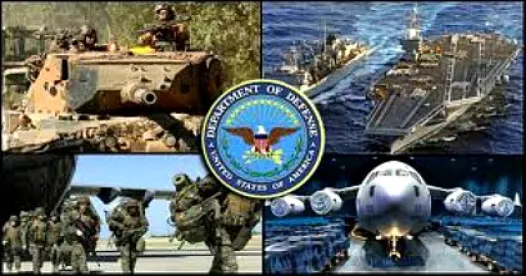Defense acquisition reform took another step forward this month with the launch of HASC Chairman Mac Thornberry’s “discussion draft” of legislation that will work its way into the FY2017 National Defense Authorization Act. Chairman Thornberry continues to press with his commitment to an iterative, incremental drive for acquisition reform. This year’s bill focuses on key priorities that complement the efforts of Secretary Carter and Under Secretary Kendall to capitalize on private-sector innovation. The draft bill promotes experimentation and prototyping and takes some steps to attract nontraditional defense contractors into government contracting.
Unlike last year’s reform bill, however, this legislation has not yet garnered the support of HASC Ranking Member Adam Smith. He and other commentators have argued that the bill’s language might actually increase bureaucratic oversight and constrain the military services’ existing procurement authorities. In this post, we summarize the bill’s key provisions and discuss its potential path through Congress.
For Major Defense Acquisition Programs (“MDAPs”) that pass Milestone A after October 1, 2018, the bill would divide weapon systems into “platforms,” “components,” and “interfaces.” A tank platform, for example, might have dozens or hundreds of internal systems, all of which interact with the platform through physical and logical interfaces. The bill would require the use of modular, open-systems architecture development to facilitate competitive prototyping and faster upgrades, particularly in the components. Military services would be able to pay for rapid prototyping projects with funds not tied to a program of record, and would have some flexibility to use unobligated procurement dollars to pay for initial production. Non-competitive selection procedures for follow-on production would be permitted, if the initial prototyping was competitive, meets “a high-priority warfighter need” and the result has been “demonstrated in a relevant environment.”
To implement these changes, the bill would reorganize key aspects of the oversight process. A new board within each service would be constituted to form a “strategic” plan for prototyping and a “tactical” plan of identifying target programs. Although the services would gain additional authority over joint programs as of October 1, 2019 (currently the purview of the Office of the Secretary of Defense), the Under Secretary of Defense for Acquisition, Technology & Logistics would gain the authority to establish binding “cost and fielding targets” before Milestone A, to which the milestone decision authority would have to manage. These components — particularly the additional Milestone A oversight and the institution of new prototyping boards within each service — have generated the most opposition, including that of Ranking Member Smith.
The bill’s “split-the-baby” approach to intellectual property reform has also prompted lukewarm reactions. On one hand, contractors stand to gain some valuable advantages: “deferred ordering” of technical data would be limited to five years after delivery of last item on the contract; contractors would retain ownership of IP for components developed with company funds; and they could negotiate with the government over IP developed with joint public/private investments. On the other hand, MDAP “interfaces” would be required to be open systems, and the government would retain unlimited rights in technical data for external interfaces. The outcome of negotiations over IP rights is difficult to predict. Our colleagues raised the question whether recent proposed rules about IR&D might lead to solicitations that strengthen the government’s position to secure robust IP rights, at the expense of truly “independent” R&D.
Other questions remain. The bill anticipates that the services will “identify and coordinate open-system standards,” but it is not clear how the services will carry out this coordination. The bill does not address bid protest jurisdiction, although Chairman Thornberry did express “hope” that additional opportunities to compete for component upgrades would reduce the incentive to protest. Those aspirations fall short of the proposals by General Mark Milley to curtail the jurisdiction of the Court of Federal Claims — effectively forcing disappointed bidders to select a single forum for a protest — and to relax the standard for lifting a stay of performance during GAO bid protests. Finally, it remains to be seen how tightly the draft legislation will align with the priorities of Chairman Thornberry’s Senate counterpart, SASC Chairman John McCain.
The draft bill is an ambitious continuation of acquisition reform, but we expect to see significant amounts of negotiation before any of these proposals become law.




 />i
/>i

